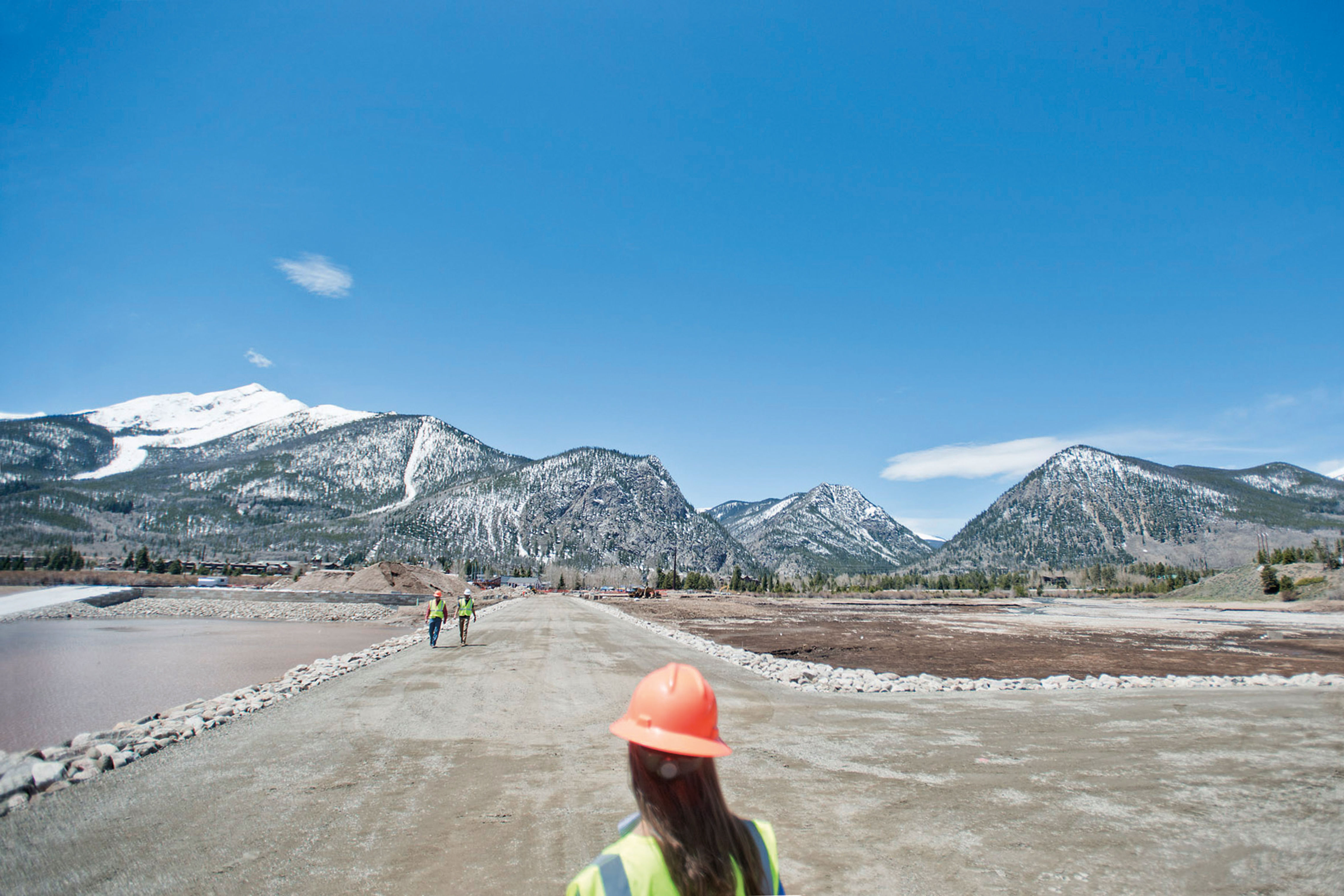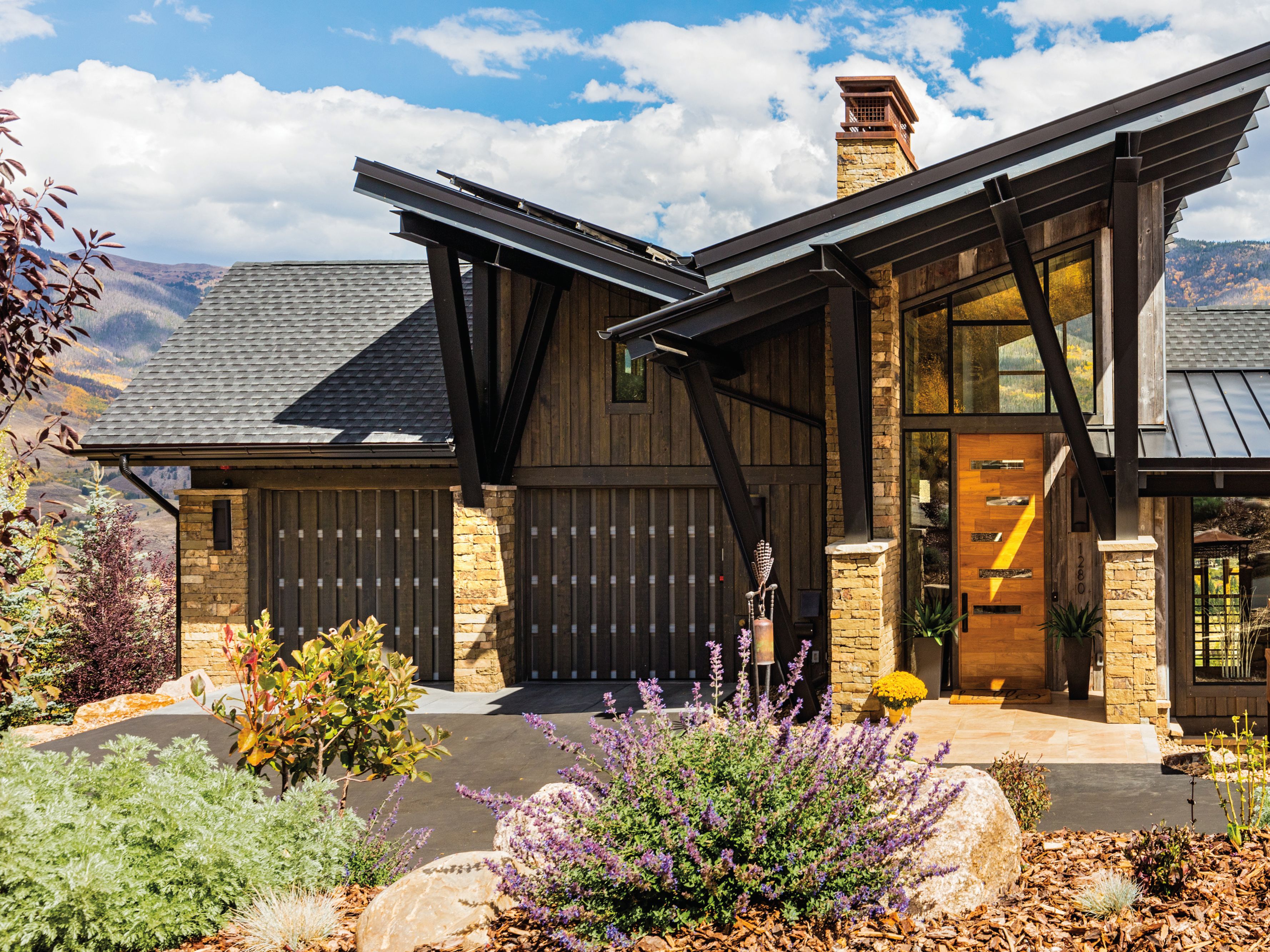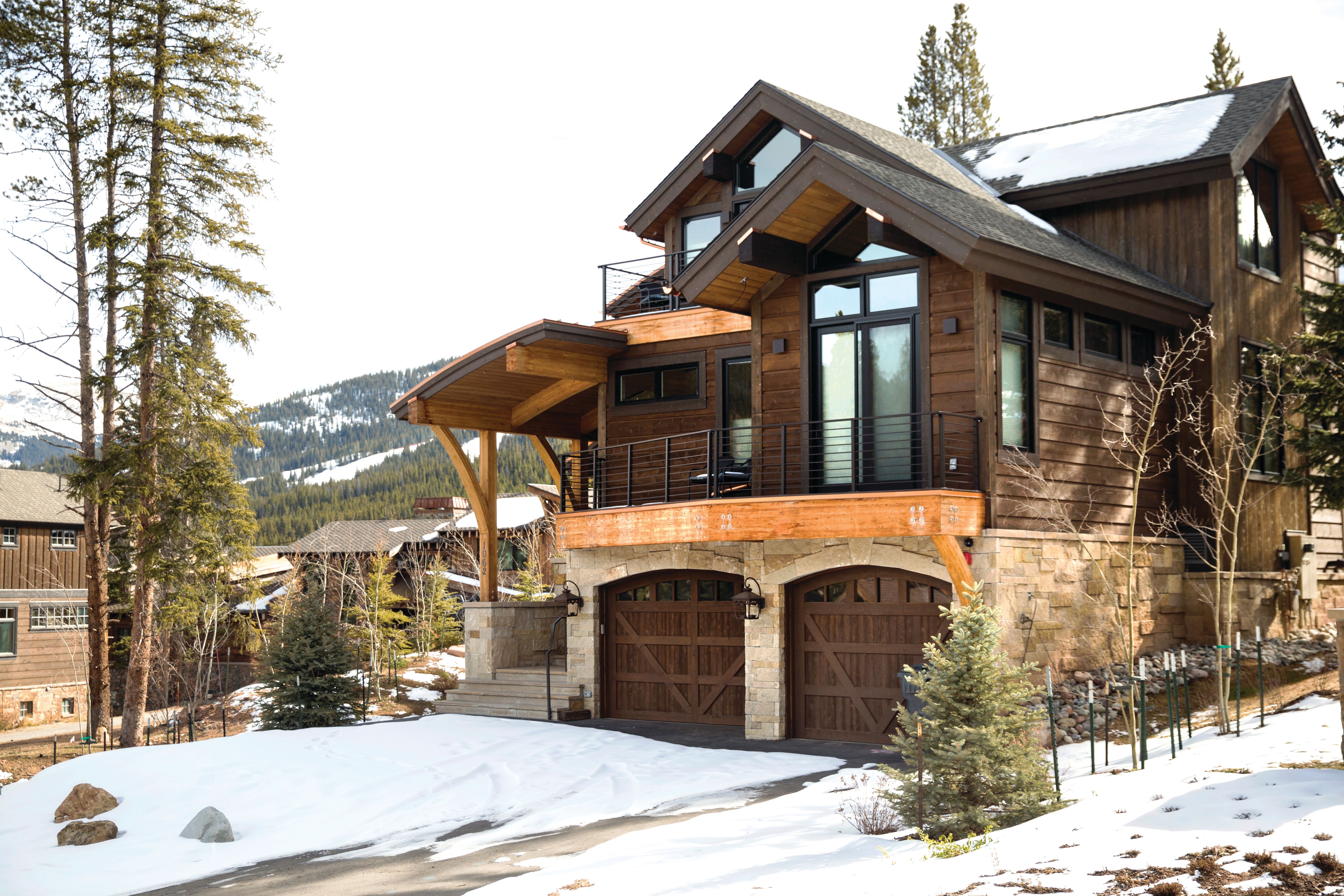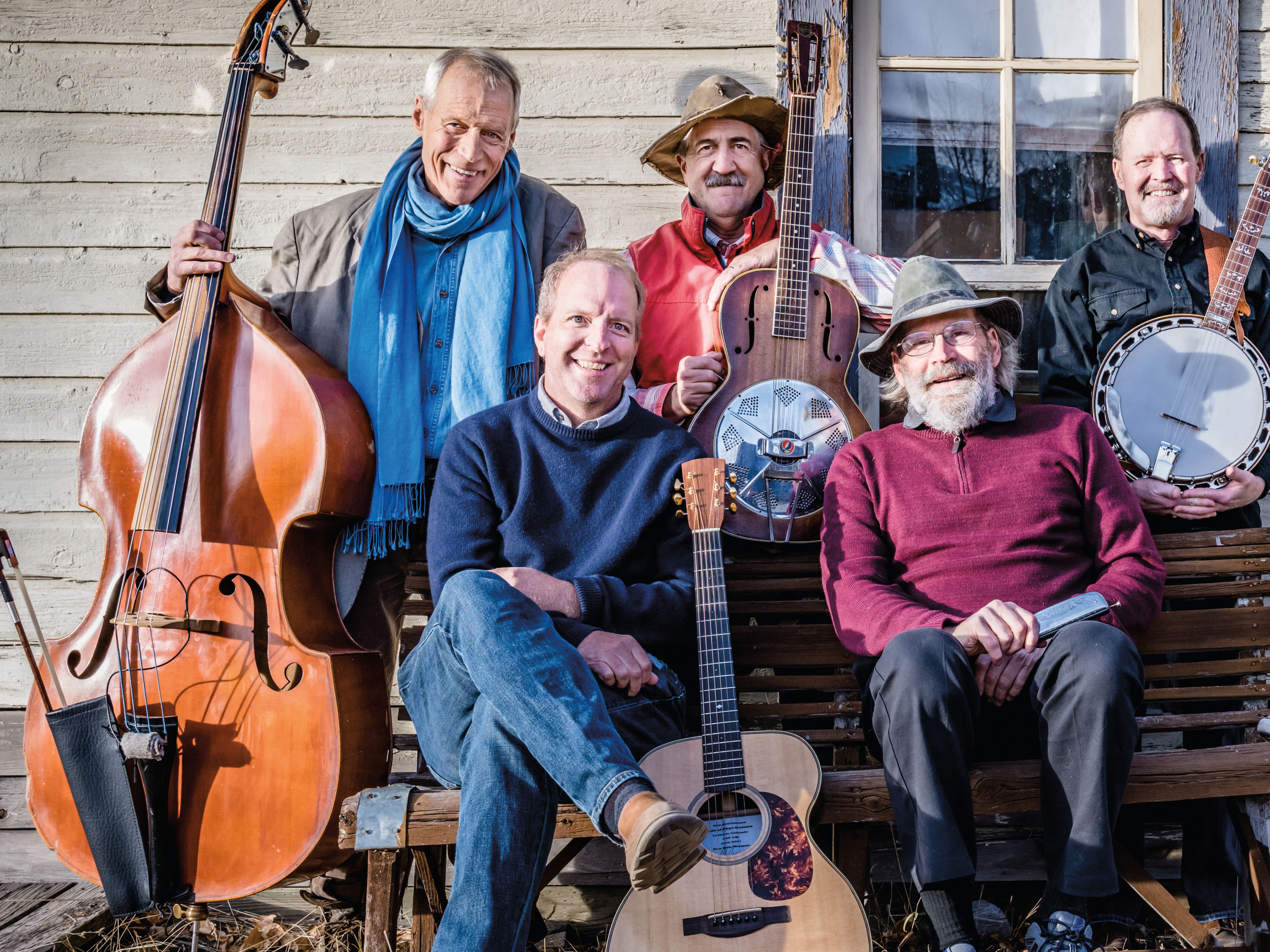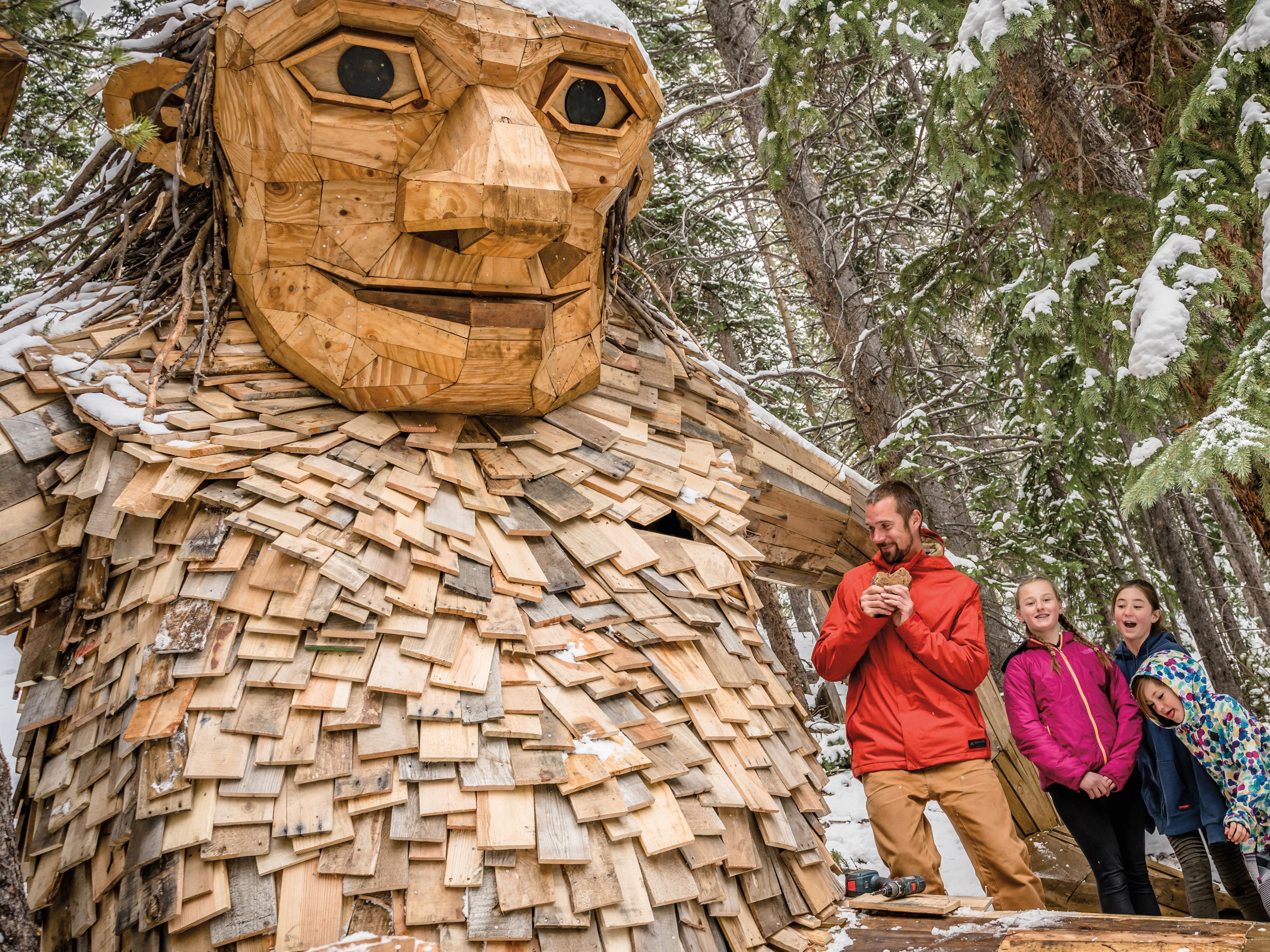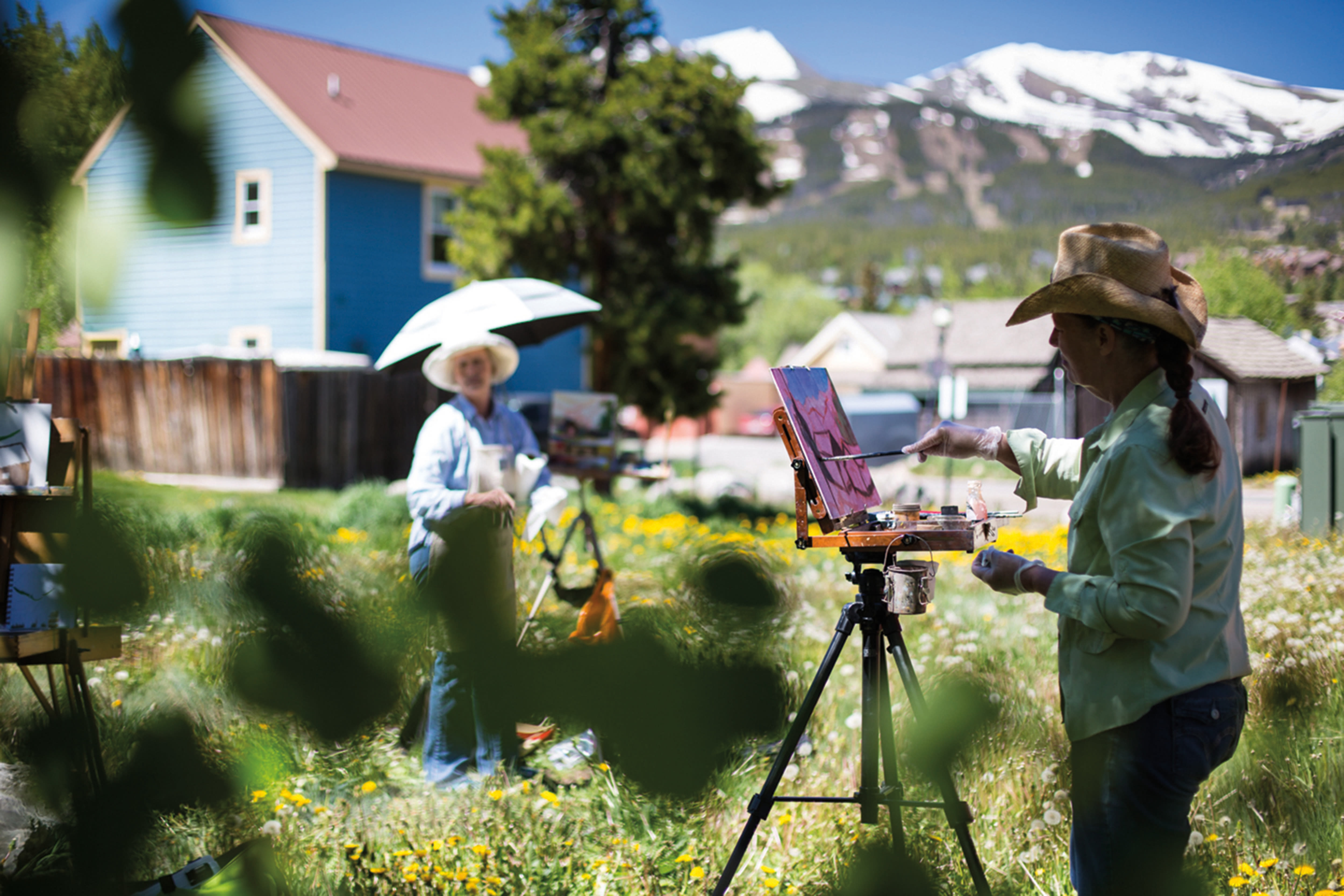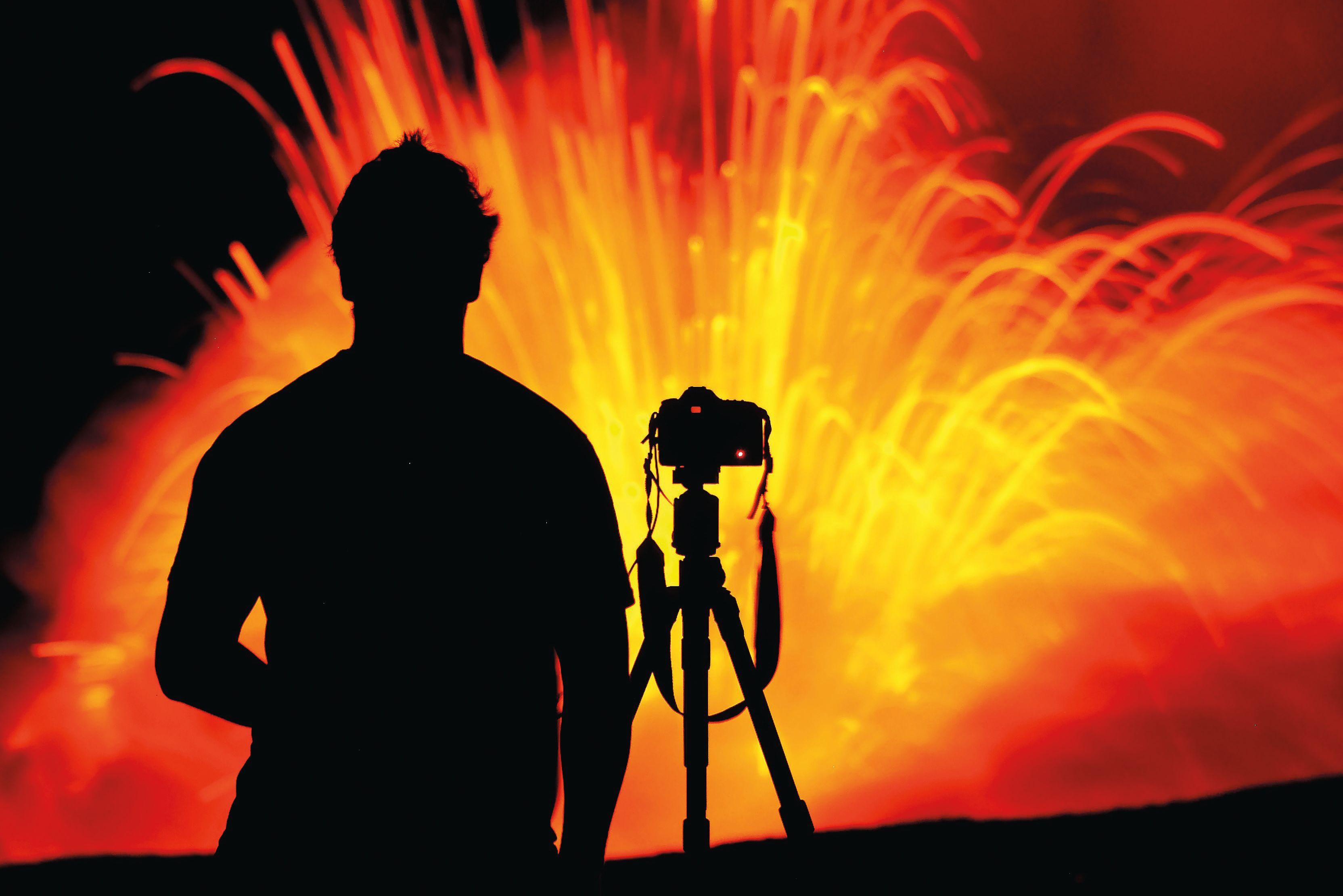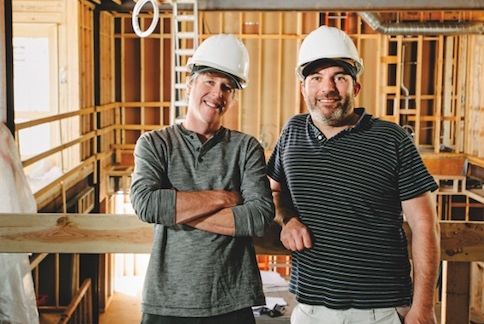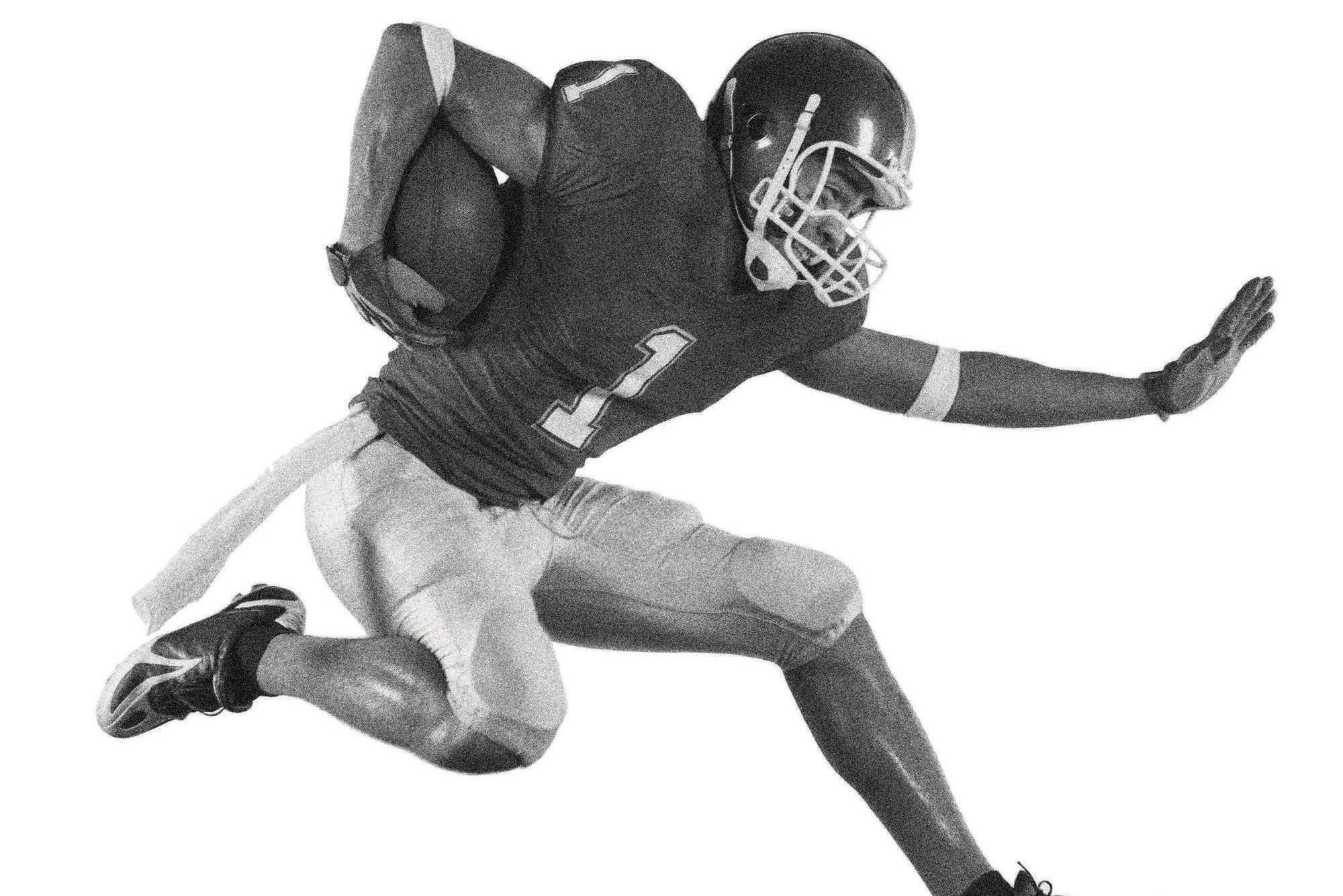Outdoors
Triumph or Tragedy: A Day On Colorado's Most-Crowded Fourteener
What’s to be done about the perennial mob of peak-baggers overwhelming Summit County's beloved fourteener?
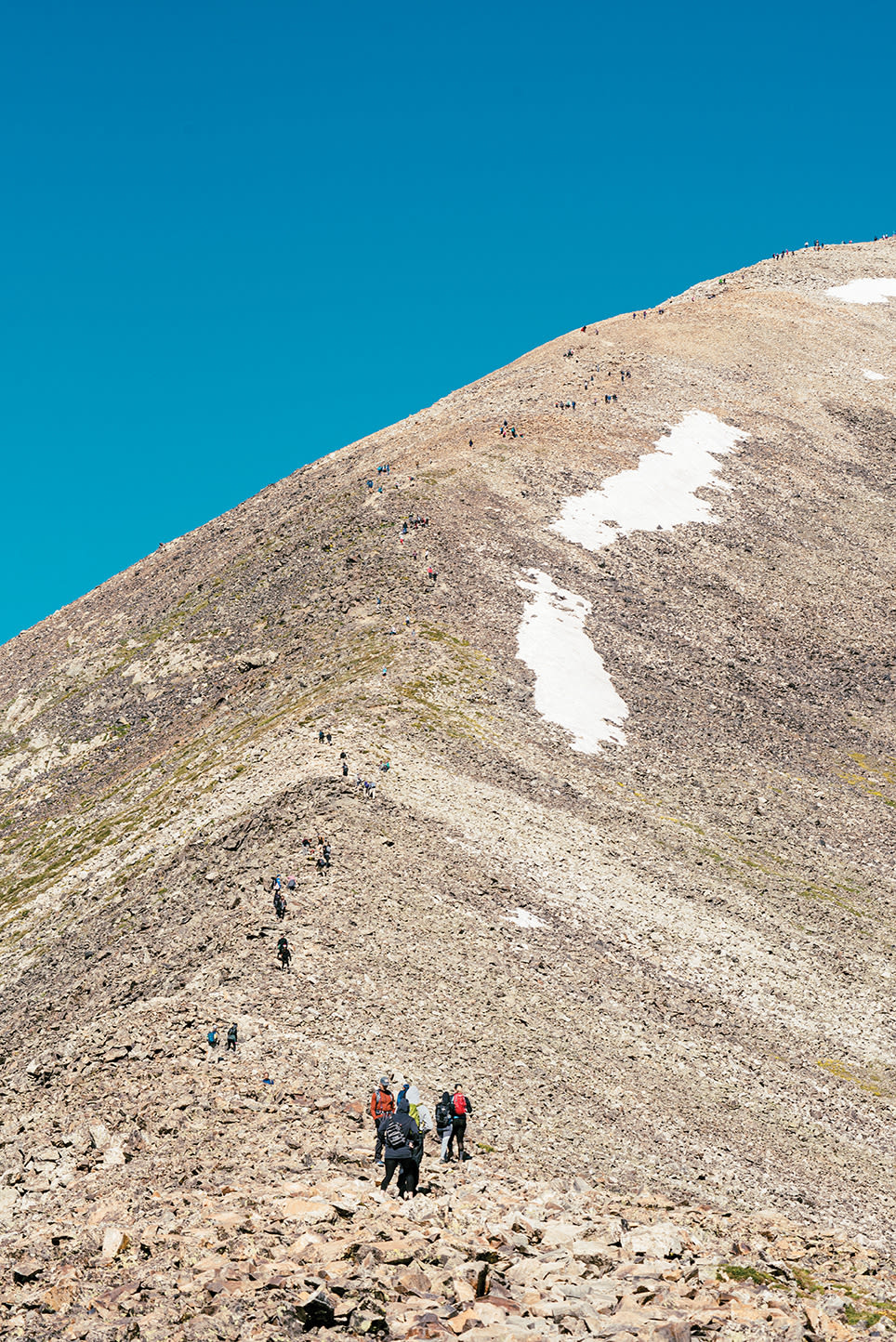
On a typical August day, hundreds of hikers parade along the east ridge of Quandary Peak from dawn until dusk.
Image: Ryan Dearth
Just past 8:30 a.m. on Sunday, August 18, 2019, I encounter the first hiker descending from the summit of 14,265-foot Quandary Peak, the most popular fourteener in Colorado. He’s a man in his 20s, with close-cropped hair and a lean build, who lives in Denver. “Were you the first to summit?” I ask, having left the trailhead a half hour earlier. “Oh, gosh no,” he wheezes. “There were people who started at least at 4.”
The sky is a brilliant shade of alpine blue, the air crisp but warming. Sure enough, 30 seconds later another young man comes romping down the trail, gliding over roots and rocks like an eel. He tells me he’s from Kansas, started at 4:30, and was among “at least the top 15” up the peak, his first fourteener summit. He thought his start was early, he says, but “then I met someone who started at 2 a.m. because she had to be at work at 8.”
Next I pass a woman from North Carolina and ask why she chose Quandary. She says, “It had the best reviews on All Trails and the prettiest photos.”
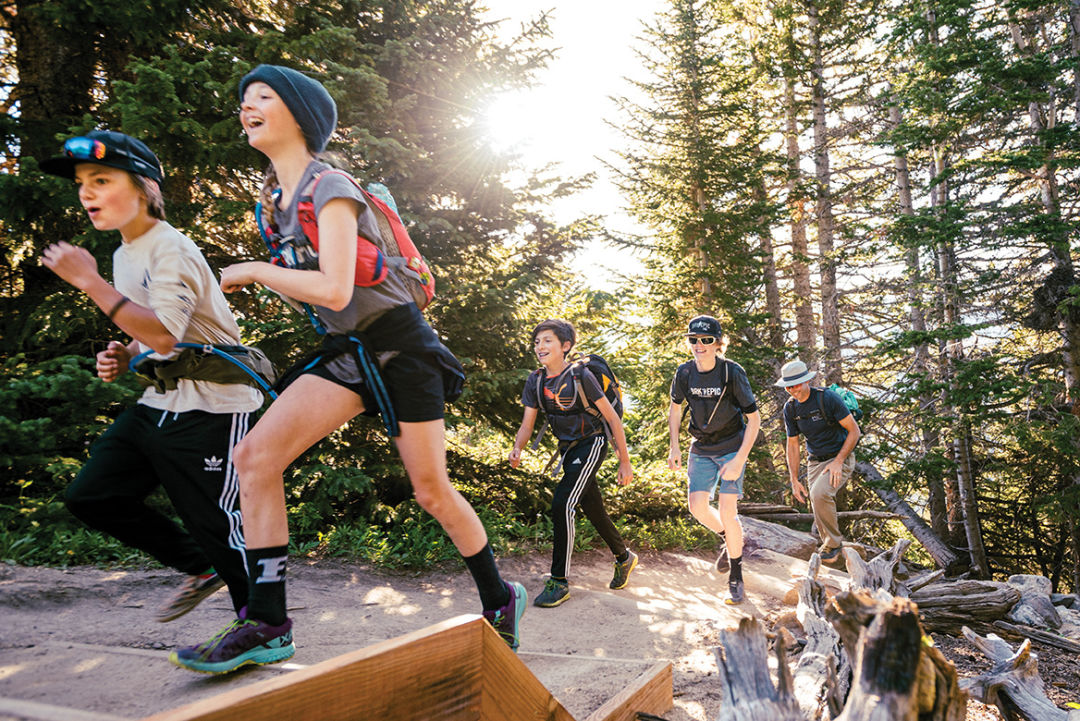
Matt Brewer (far right) leads a pack of local teens to the summit, which he’s hiked to a dozen times.
Image: Liam Doran
A Vail woman darts out of the forest and runs past us with trekking poles, already below tree line after starting at 6. I round a corner and join a quartet of local eighth graders led by one of their fathers, Matt Brewer, who’s climbed Quandary 12 times. The kids are talking about throwing back flips off cornices. “We should skin this and ski it this winter,” says Finn Schroder, 13. The others agree that would be righteous.
I come upon Jason Hunter, a 23-year-old college student from Boulder attempting his first fourteener—a consistent theme today, I will find. He’s resting off to the side of the trail. “I heard it was easy, but it’s not,” he says dejectedly. His boyfriend is lower on the mountain and has already decided he can’t summit. His sister and her boyfriend are ahead of them, out of sight. They’d started together at 7. “I’m not sure I’m going to make it,” Hunter says.
I wish him well and continue uphill, soon passing a group of four with a six-pound dog that yaps at me. They explain that they let the dog walk for 15 minutes at a time, then carry him again. Just above tree line, a sign on a switchback reminds us: “311,000 people will climb 14ers this year. Your actions matter!” I pass a 20-year-old woman from Denver reclined on a rock. “I could sit here for a while,” she tells her friend.
When I ask people where they’re from, many say “here,” meaning Colorado, a testament to the peak’s national and international draw. (I will hear hikers speak Italian, Spanish, and Swiss-German before the day is over.) But then I meet a trio whose “here” means Blue River, in the valley below us, followed by nine players and two coaches from the Summit High School basketball team on their way down after starting at 5:45. It’s the first hike of 16-year-old Hector Diaz’s life.
“I’ve lived here since I was 3,” he says. Head coach Jordan Buller thought climbing Quandary would make for good team bonding. “I figure we live here, we might as well get these guys out in nature,” Buller says.
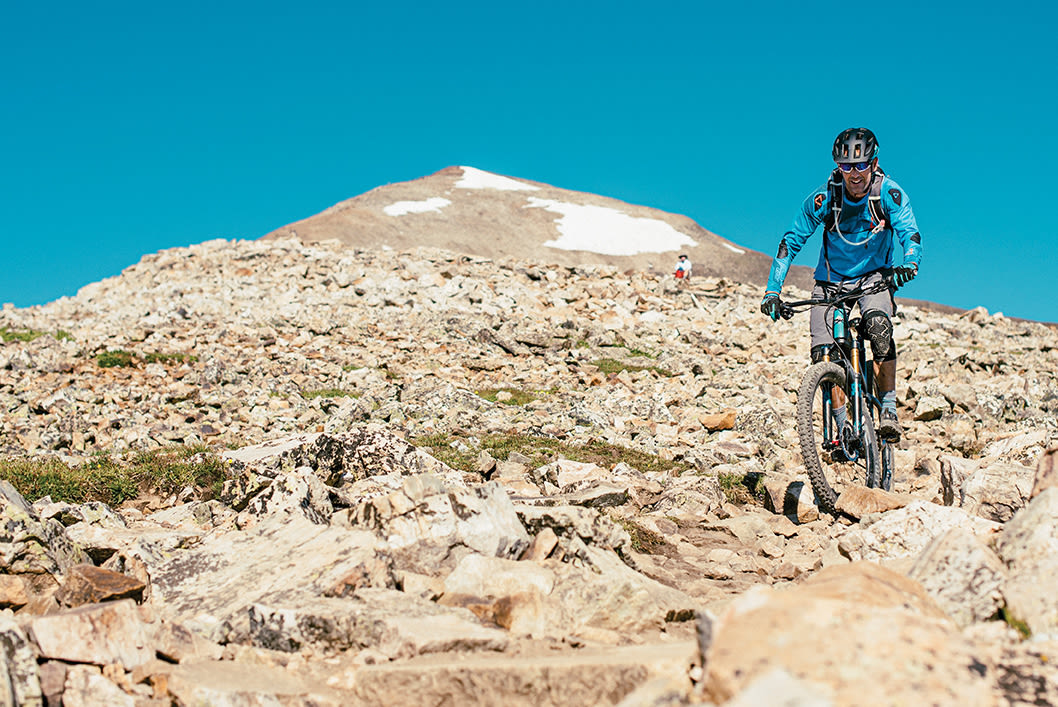
A mountain biker descends from the summit, at 12,900 feet.
Image: Liam Doran
Just then, two mountain bikers come bouncing down Quandary’s rock steps at 12,900 feet, barely holding on. As they pass, I ask if they carried their bikes to the summit. “Yeah, we ran out of nice trail!” one hollers back.
Few among the hundreds I meet will have any idea that Quandary, with its easy reputation and straightforward route up a wide, gradual ridgeline, is actually a frequent site of rescues because it is also dangerously easy to underestimate. And that’s part of the quandary of Quandary.
As 27-year-old Baird Elam says when we meet on the saddle at 13,000 feet, “Anything at elevation is tough.” Elam lives in Denver and has summited 33 fourteeners; today is her fourth trip up Quandary. “But if people stay on the trail,” she adds, “they shouldn’t get into trouble.”
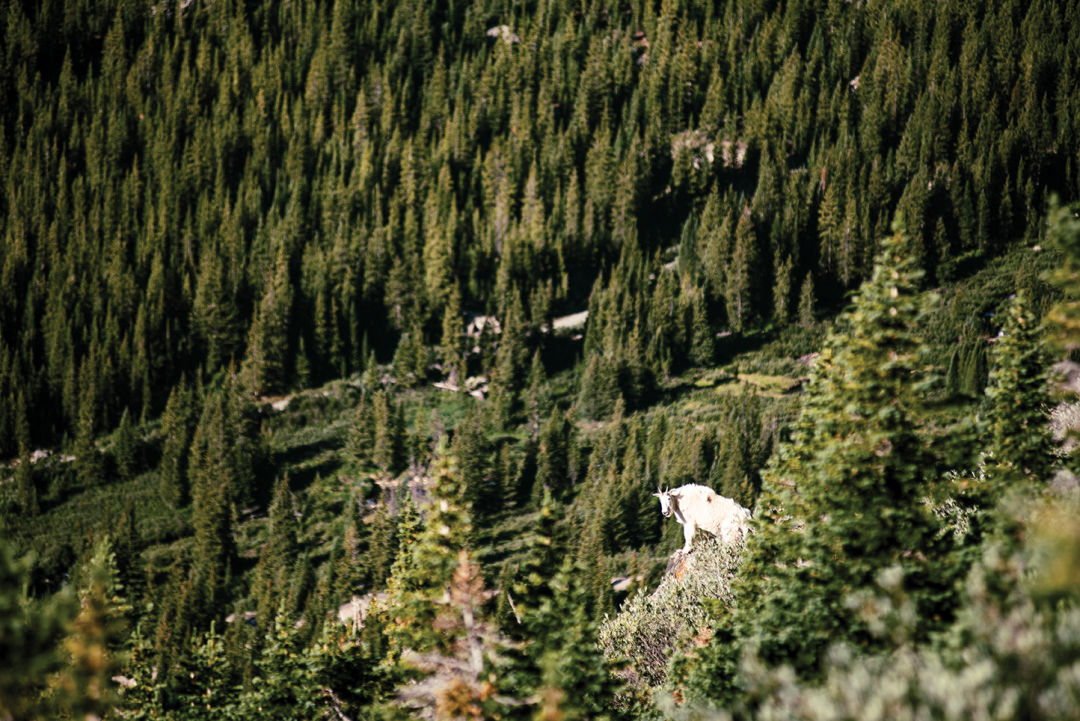
Image: Liam Doran
Quandary wasn’t always the most popular of the state’s 50-something fourteeners (the tally of Colorado peaks towering over 14,000 feet ranges from 53 to 58, depending on the definition used). For years that distinction belonged to Mount Bierstadt, a gradual Front Range climb with less elevation gain and a trailhead closer to Denver. But in 2018, according to infrared counters placed on a variety of peaks by the Colorado Fourteeners Initiative (CFI), Quandary passed Bierstadt in foot traffic. Its location—seven miles south of Breckenridge—and easily drivable proximity to Colorado Springs and Denver make it an ideal day trip. In 2018, it saw more than 38,000 visitors between Memorial Day and the first week in October, an average of 283 per day. On four of those days, the crowd neared 1,000.
“You would think that if it has the most people, it has the most impact on the natural resource, but it doesn’t,” says Lloyd Athearn, CFI’s executive director. CFI trail workers spent three summers improving Quandary’s crumbling east-ridge route from 2016 to 2018. They took it from what he calls a C-plus to an A-minus, and today the trail stands as an exemplar of sustainable construction.
“Certainly the high use on Quandary causes ancillary effects,” Athearn allows. “If people are parking on Highway 9 and creating a safety hazard or blocking driveways of residents, or pooping in the bushes and leaving trash, those are definitely impacts from people wanting to climb the mountain.”
You could argue that the biggest impact, however, is on local emergency workers, namely the Summit County Rescue Group (SCRG). The group’s 72 volunteer members respond to about 80 to 100 calls a year, averaging about 10 on Quandary. “It is our major mission generator,” says SCRG President Brian Binge, who joined the team in 1999. “It definitely accounts for a majority of our missions during the summer.”
Though the circumstances vary, many safety incidents arise when hikers get to the summit and decide on a whim to descend the west ridge. The route looks benign at first—there’s even a faint trail—but it quickly becomes technical and exposed. CFI placed a counter on the west ridge for two summers and rarely measured more than 20 people per day. But some take shortcuts around precarious ledges and get deeper into trouble, often to the point where retreat is more dangerous than calling for help.
SCRG has responded to so many calls from people stranded in virtually the same place on the west ridge that members plotted a GPS route to it and named it the Escape Hatch. One summer, after doing a half-dozen missions there, they placed bolts in a giant boulder for permanent protection. They’ll set up a 1,000-foot rope line staffed by rescuers to help victims navigate the steep descent. “It’s always at
night; it’s never during the day,” Binge sighs. “I’ve summited Quandary like a dozen times, and I’ve only seen it in daylight once.”
Fatalities are rarer than helicopter extractions, but they do happen—in recent summer incidents, one woman fell down a couloir and died, and another suffered a cardiac arrest on the summit. More often, a Black Hawk helicopter is called in from the Colorado National Guard base west of Vail to pluck a stranded or injured hiker from the peak. Binge says he hopes those calls will be less likely this summer given the potential impacts to a rescue team during the Covid-19 pandemic, but he knows people aren’t going to stop hiking Quandary.
Back on the east ridge last August, I encounter my first west-ridge hiker descending as I near the summit. He is a 35-year-old rock climber from Boulder with a muscular build and a climbing helmet strapped to his pack, wearing a short-sleeve shirt. In the past month, he’s summited 13 fourteeners. He’d intended to climb the Diamond on Longs Peak this morning, but his partner bailed, so he left Boulder at 3:45 a.m. for plan B: a west-to-east traverse of Quandary.
The west ridge wasn’t too bad, he says, mentioning a couple of snow patches but otherwise solid rock. “It doesn’t surprise me that people get in trouble there any more than it surprises me that people die on Capitol,” he says, referring to a treacherous fourteener near Aspen where five people died in a span of six weeks in 2017. “People are making bad decisions.”
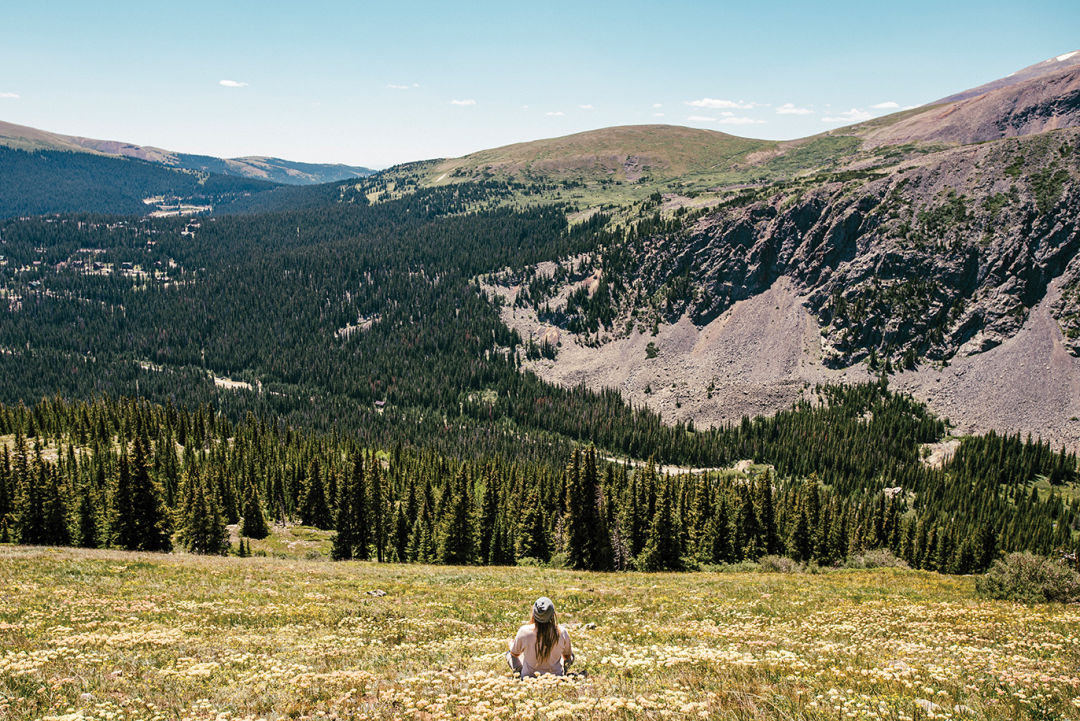
Off the trail, oases of solitary contemplation abound.
Image: Ryan Dearth
I count 163 hikers from the saddle to Quandary’s summit, a distance of less than a mile. Another 46 are resting on the summit when I arrive, ogling the panoramic view and talking about their sausage fingers (a common side effect of prolonged arm-swinging on long endurance hikes). Everyone is tucked behind cairns and wind shelters to escape the 45-degree temps and brisk breeze. A girl FaceTiming her mom exclaims, “I wasn’t even the slowest!” Next to her, a pair of young men sip on Coors cans and pass a bowl back and forth.
I ask 30-year-old Dan Riff of Denver, who made the hike with a friend, if he feels a sense of achievement. “For sure,” he says. “We were talking about that. I don’t think anyone actually likes hiking up. This is not what I wanted to do today. But that’s why you do it, right? To say you did it?”
A family of four, plus their yellow lab, looks for someone to take their photo atop their first fourteener. They grab one of three cardboard signs stashed under rocks that read “Quandary Peak 14265.” Someone snaps a shot, then the mom rushes to start her descent, shivering. No one is on the west ridge that I can see.
When I head back down the east ridge, I come upon a scene out of Rudy. A teenage girl has strayed from the trail and is bear crawling up a field of scree, barely moving. “Let’s go!” a guy shouts down at her. “Keep moving, girl! Don’t worry about what’s over there; worry about what’s in front of you! One step at a time!” She collapses shortly thereafter, 500 feet from the summit. I doubt she will make it.
Just below the saddle, I pass a young couple from South Carolina. The woman is carrying a 21-month-old girl in her arms down a rugged stretch of trail. The man has an empty kid carrier on his back. They turned around a mile below the summit. Their toddler looks unnerved; the woman looks disappointed.
I spot an unused maxi pad weighted down by a pair of small rocks—emergency supplies, I guess—then a couple plodding upward. “I’m not giving you a hip massage,” the guy says. “Come on!” she replies. “It needs to happen!”
When I get below tree line, two guys with trekking poles motor past, on their way up. One is shirtless. Turns out they have just come from pacing a friend to the finish line of the Leadville 100 (a 100-mile backcountry ultramarathon in nearby Lake County) this morning. “We haven’t slept much,” the leader says, grinning.
Near the bottom, a lady in front of me shrieks, “I can see the road! I’ve never been so happy to see civilization.” I stroll past a BMW parked at the base of the trail, directly in front of a sign that says “No Parking Anytime.” Three girls in their 20s stumble in behind me. “My muscles are so dead,” one says to the others. “I was just flopping down the hill, like, I’m just gonna let my legs take me where they take me, and hopefully I don’t face-plant.” I decide not to tell them some local mutants go up and down Quandary in less than 90 minutes.
In all, I see 309 people during my hike, which started at 8 a.m. and ends at 12:40 p.m. This means the peak will probably see around 400 total today—busy, but not unusual. Sure enough, as I slip into flip-flops and get ready to leave, two more couples walk by on their way to the trail, a peak-bagging conveyor that never ends.



